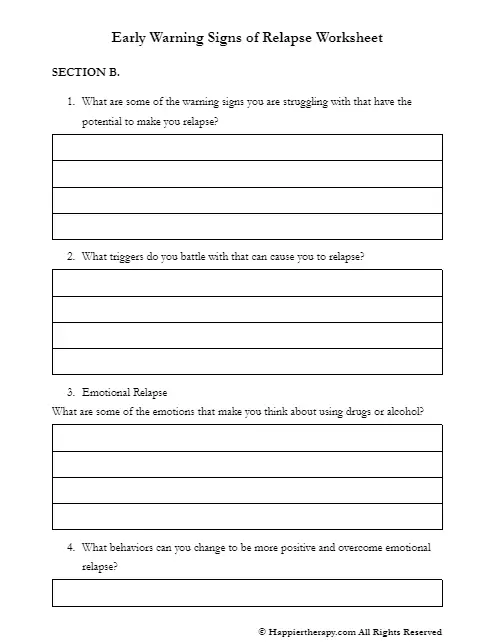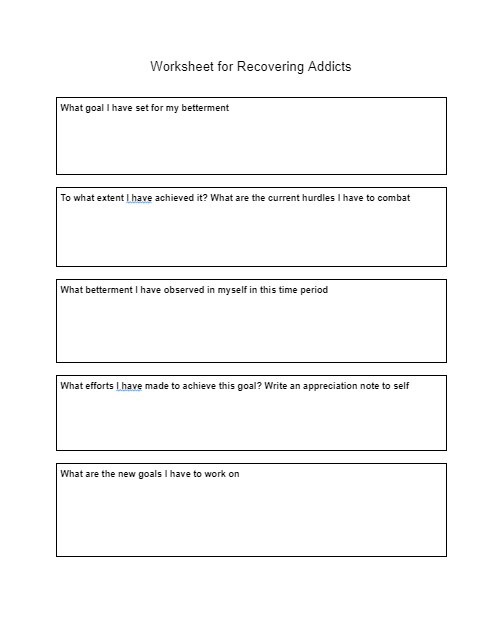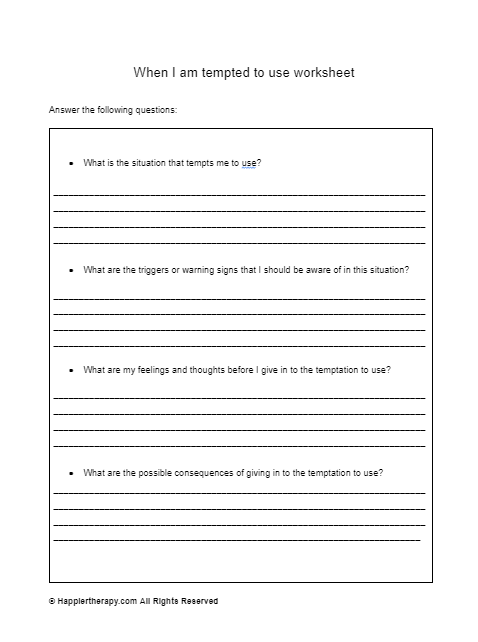High-risk situations for relapse worksheet
Download Worksheet
What is the theory behind this High risk situations for relapse worksheet?
This worksheet is based on the Relapse Prevention (RP) model for addictive behaviours that combines theoretical aspects of social cognitive psychology and behavioural strategies from Cognitive Behavioural therapy to explain why relapse happens and how it can be prevented. It proposes that two types of factors lead to relapse: immediate determinants (eg. high risk situations, coping skills) and covert antecedents (eg.lifestyle imbalances or stress levels).
Treatment under the RP model begins with identification of environmental and emotional characteristics of situations that are a risk for relapse . Based on this assessment a treatment plan is drawn.
How will the worksheet help?
This worksheet can help a client identify the characteristics of situations that are likely to pose a risk for relapse. It will help them make an active effort to avoid or deploy coping strategies when faced with similar situations in the future.
How to use the worksheet?
This worksheet is particularly useful for clients with addictive behaviours like substance abuse disorders. Instruct the clients to recall past instances which triggered their addictive behaviours and fill the worksheet accordingly.

 By
By


